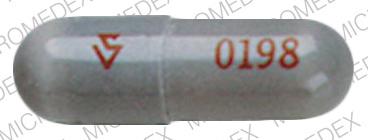Axocet Interactions
There are 651 drugs known to interact with Axocet (acetaminophen / butalbital), along with 14 disease interactions, and 2 alcohol/food interactions. Of the total drug interactions, 43 are major, 563 are moderate, and 45 are minor.
- View all 651 medications that may interact with Axocet
- View Axocet alcohol/food interactions (2)
- View Axocet disease interactions (14)
Most frequently checked interactions
View interaction reports for Axocet (acetaminophen / butalbital) and the medicines listed below.
- alprazolam
- Ambien (zolpidem)
- amlodipine
- Celebrex (celecoxib)
- Concerta (methylphenidate)
- Cymbalta (duloxetine)
- ethanol
- Fioricet (acetaminophen / butalbital / caffeine)
- Fiorinal with Codeine (aspirin / butalbital / caffeine / codeine)
- Flexeril (cyclobenzaprine)
- Klonopin (clonazepam)
- Lamictal (lamotrigine)
- Lutera (ethinyl estradiol / levonorgestrel)
- Migralam (acetaminophen / caffeine / isometheptene mucate)
- Migratine (acetaminophen / dichloralphenazone / isometheptene mucate)
- phenobarbital
- Seroquel (quetiapine)
- Soma (carisoprodol)
- Sonata (zaleplon)
- Tylenol with Codeine #3 (acetaminophen / codeine)
- Vyvanse (lisdexamfetamine)
- Wellbutrin (bupropion)
Axocet alcohol/food interactions
There are 2 alcohol/food interactions with Axocet (acetaminophen / butalbital).
Axocet disease interactions
There are 14 disease interactions with Axocet (acetaminophen / butalbital) which include:
- alcoholism
- liver disease
- acute alcohol intoxication
- drug dependence
- liver disease
- porphyria
- rash
- respiratory depression
- PKU
- adrenal insufficiency
- depression
- hematologic toxicity
- osteomalacia
- paradoxical reactions
More about Axocet (acetaminophen / butalbital)
- Compare alternatives
- Drug images
- Side effects
- Dosage information
- During pregnancy
- Drug class: analgesic combinations
Related treatment guides
Drug Interaction Classification
| Highly clinically significant. Avoid combinations; the risk of the interaction outweighs the benefit. | |
| Moderately clinically significant. Usually avoid combinations; use it only under special circumstances. | |
| Minimally clinically significant. Minimize risk; assess risk and consider an alternative drug, take steps to circumvent the interaction risk and/or institute a monitoring plan. | |
| No interaction information available. |
See also:
Further information
Always consult your healthcare provider to ensure the information displayed on this page applies to your personal circumstances.


